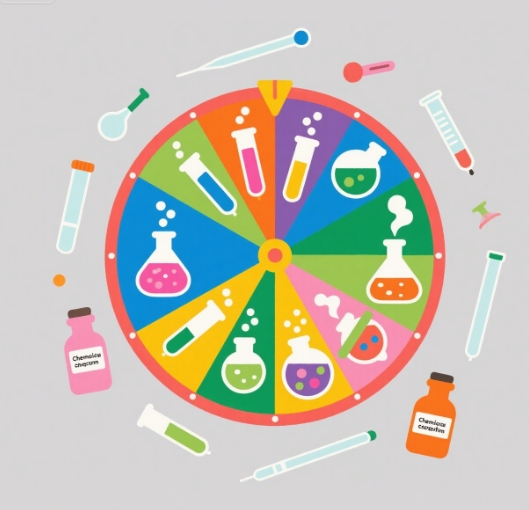Engaging students in chemistry has long been a challenge, especially when lessons are confined to static textbooks or monotonous lab routines. Enter the Wheel of Chemistry Experiments—a dynamic, gamified approach to science education that injects spontaneity, challenge, and curiosity into the learning process. Leveraging wheel-based randomization mechanics, educators and content creators now have a tool that transforms chemistry from obligation into exploration.
The Chemistry Engagement Crisis
Student interest in STEM subjects is declining. A 2023 Education Week report revealed that only 29% of high school students found chemistry “very engaging,” with many citing repetitive labs and a lack of interactivity as primary reasons for disengagement. Traditional curricula often fail to make chemical principles tangible or exciting—especially when practical experimentation is limited due to budget or safety constraints (NGSS, 2022).
This is where interactive digital tools, particularly those grounded in randomness and challenge, enter the scene.

Why Spin-Based Learning Works
Gamification in education isn’t a trend—it’s an evidence-backed strategy. According to a study published in Computers & Education (Huang & Hew, 2018), gamified platforms improved student motivation by over 30% compared to conventional methods. By incorporating spinning wheels that assign random chemistry experiments, educators can simulate the unpredictability and real-life relevance of scientific discovery.
Spinners also serve an important cognitive function. According to Dr. James Gee, an expert on learning and digital media at Arizona State University, “Choice with randomness activates deeper engagement and ownership” because students are not merely passive recipients of information—they’re participants in an unfolding narrative.
Designing the Ultimate Chemistry Experiment Wheel
When designing a chemistry experiment spinner, balance is key. Here are three essential categories of randomized content to include:
- Reactivity Range: From safe acid-base indicators (e.g., red cabbage pH test) to controlled exothermic reactions (like baking soda and hydrogen peroxide), each spin can target different chemical principles.
- Material Availability: Wheels can be filtered based on school lab inventory or home resources. This ensures accessibility without sacrificing complexity.
- Learning Objective Focus: Whether aligned with stoichiometry, thermodynamics, or molecular bonding, each slot on the wheel can match standards-based outcomes.
A notable application comes from a 2021 pilot at the University of Edinburgh, where undergraduate chemistry students used a virtual “Reaction Wheel” to conduct group-based hypothesis testing. The result? A 22% increase in lab report completion rates and higher peer collaboration scores (British Journal of Educational Technology, 2022).
Meeting Educators’ and Parents’ Needs
Modern educators often face constraints: limited lab time, risk concerns, and a lack of personalized instruction. Meanwhile, homeschooling parents and online instructors crave flexible and interactive learning tools.
The Wheel of Chemistry Experiments solves these pain points by:
- Offering customizable difficulty tiers for different age groups or knowledge levels.
- Supporting cross-platform integration (usable in class, on Zoom, or via learning apps).
- Embedding built-in safety guides and links to MSDS sheets (Material Safety Data Sheets) for every spin.
From Passive to Participatory: Changing the Learning Culture
Instead of a teacher saying, “Today we’ll test for carbon dioxide,” a student spins the wheel and lands on “Combustion Reaction: Analyze CO₂ output using limewater.” This changes the framing—students become explorers instead of task-followers.
Moreover, randomness reduces perfectionism and fear of failure, allowing students to feel comfortable experimenting and iterating. This type of growth mindset has been shown to improve science retention and interest over time (American Educational Research Journal, 2020).
Final Thoughts: Chemistry Needs a Little Spin
Science should never feel predictable. The Wheel of Chemistry Experiments adds a layer of joyful unpredictability while reinforcing rigorous scientific concepts. By using this tool, educators can bring chemistry to life—even in virtual classrooms or resource-limited schools.
As schools adopt more interactive digital strategies, integrating wheel-based experiment randomizers will be crucial for fostering 21st-century skills like curiosity, critical thinking, and adaptability.
SpinTheWheel empowers students and educators alike with customizable, science-aligned wheels that transform how chemistry is taught and experienced.